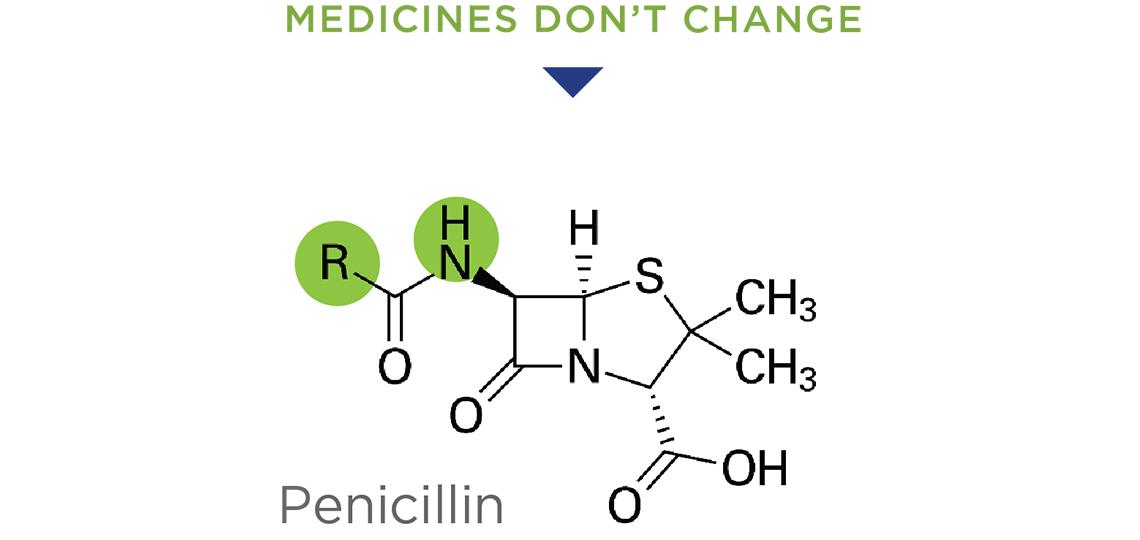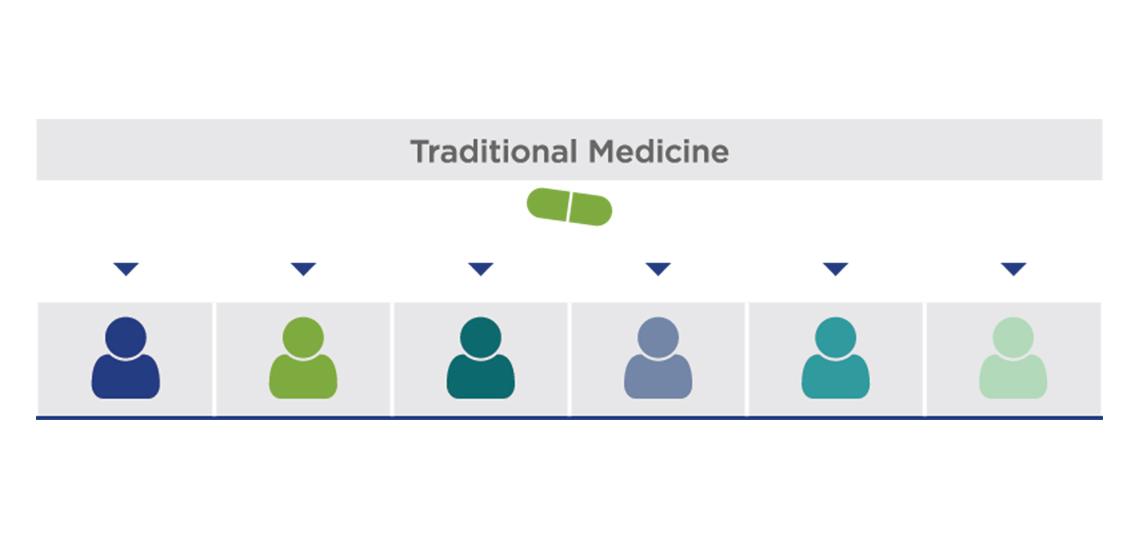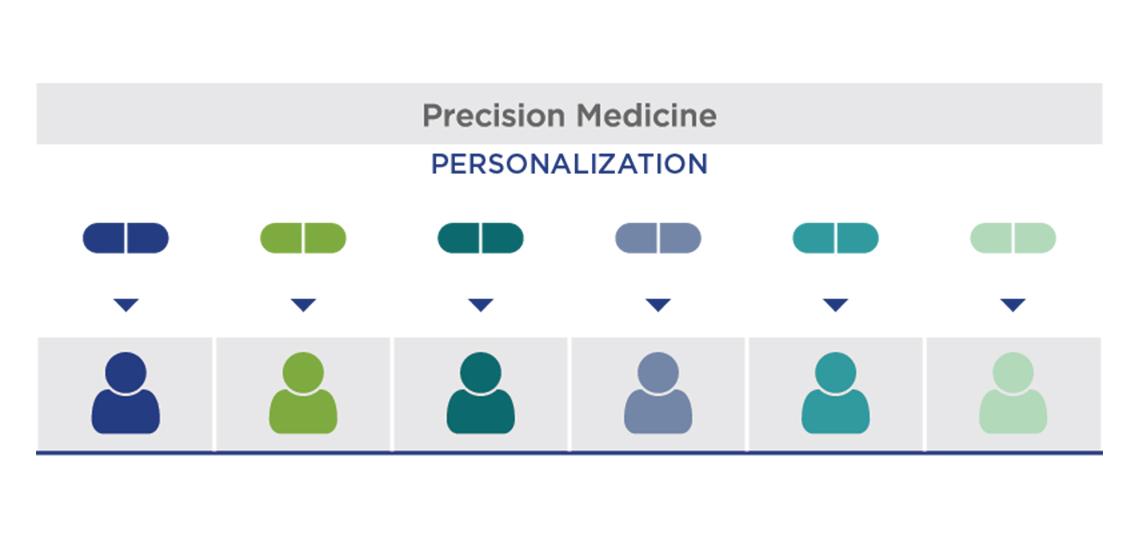
Bacteria are Remarkably Adaptable...and That's the Problem!
Four intersecting mechanisms of change, what we call the mutagenic tetrasect, come together to facilitate the ability of bacteria to change and adapt. Each of these means of acquiring new DNA contributes to the success of bacteria in undermining our attempts to control them. Bacteria can mutate their way around antibiotics, vaccines, biocides, and engineering controls.

Fixed Chemical Structure
Every antibiotic that target pathogenic bacteria has a fixed Chemical structure like penicillin above upon which chemists can add a few more atoms (highlighted green circles) to make the antibiotic more effective. Eventually, bacteria mutate and find ways to overcome these new structures. In return, chemists develop new modifications of the same core structure. Bacteria become resistant once more, and so on. Eventually, chemists run out of places to make modifications!

It's Exacerbating a Crisis!
It takes around 10 years and $1 billion for a company to bring a new antibiotic to market. Bacteria quickly evolve resistance to these drugs, sometimes within months. This undercuts the economic incentives to invest in the discovery and development of new antibiotics. Unsurprisingly, as bacterial resistance has increased, the number of companies developing new antibiotics has decreased.
Either we change the way we approve and regulate new drugs, or we develop and approve new drugs that change.

The Solution is Bacterial Killers that Change!
(Left) They are like a flu for bacteria, and specifically infect them. Phage replicate inside until they burst free, killing the cell.
(Right) Unlike chemical antibiotics, phage have DNA. By mutating their DNA, phage can evolve as quickly as bacteria.
TAILOR can wield this evolution to develop the best bacterial killers quickly!


Phanges are Precision Medicines Tailored to Your Illness
For some diseases that are fundamentally caused by and progress with change, we may need medicines that change as well. For example, engineering patients' own T cells to attack their cancer is a precision medicine. CRISPR-based correction of your DNA to remove mutations that cause blindness is another example. Both of these approaches, landmark in their concept, were recently approved by the FDA. Personalized medicines are desperately needed to combat antibiotic resistance. Doctors already tailor patients' treatments based on their bacterial strain’s antibiotic susceptibility. TAILOR can personalize treatment by discovering and developing the most effective antibiotic and phage combinations.








